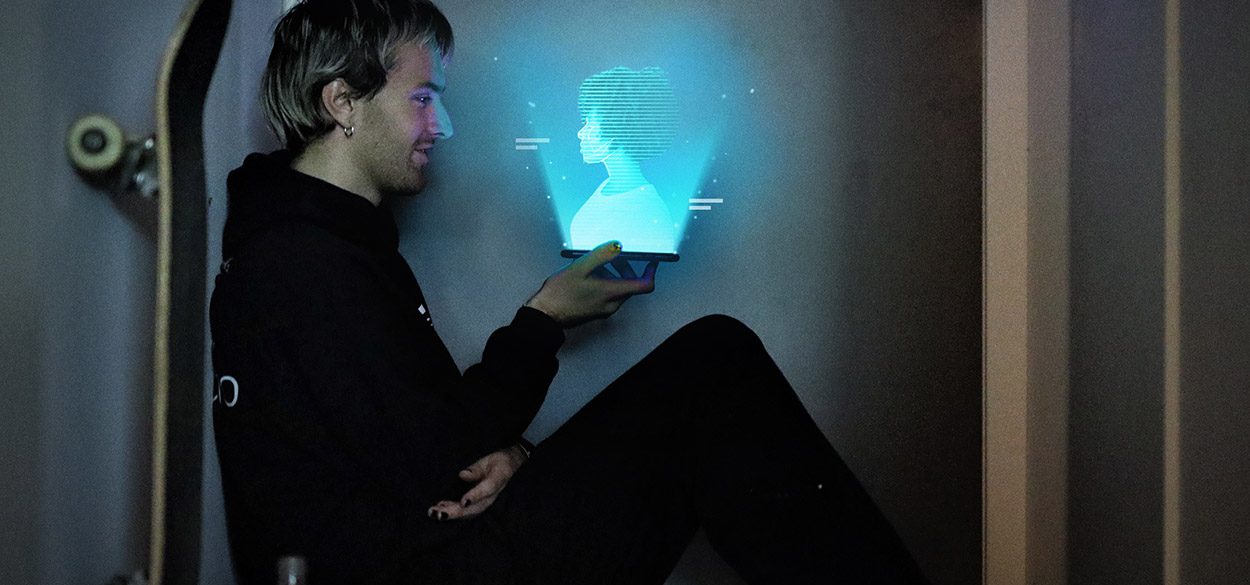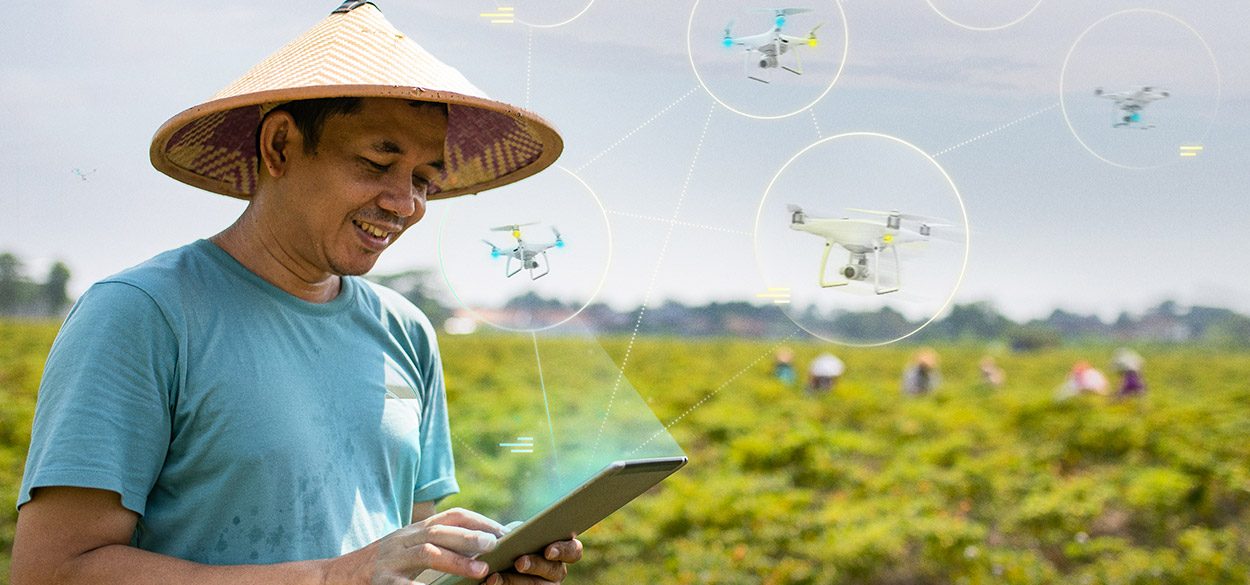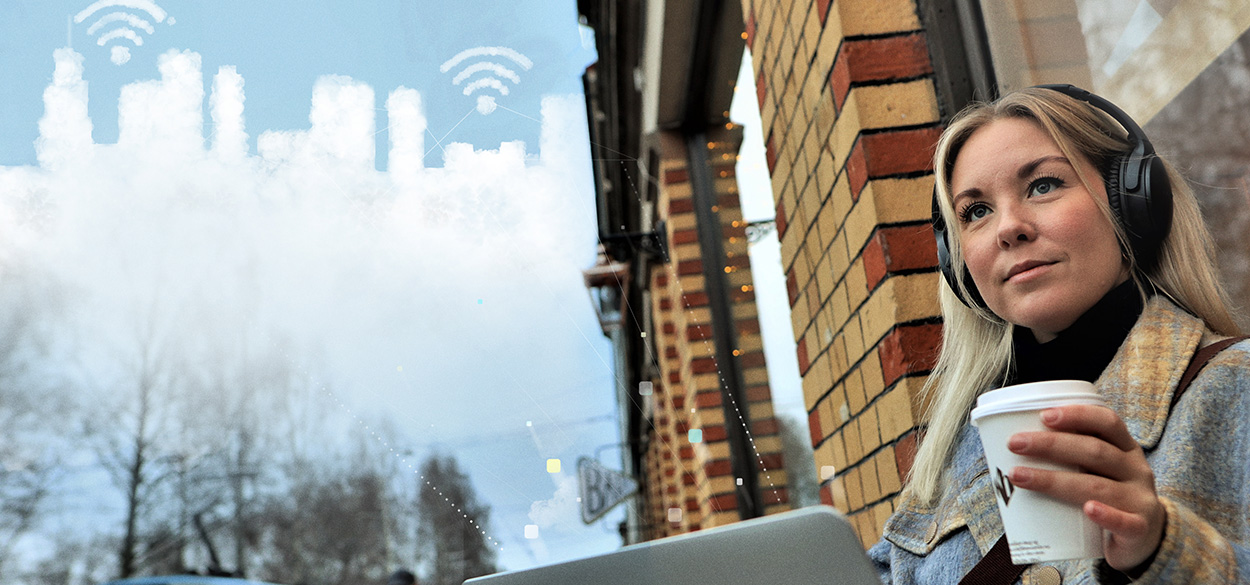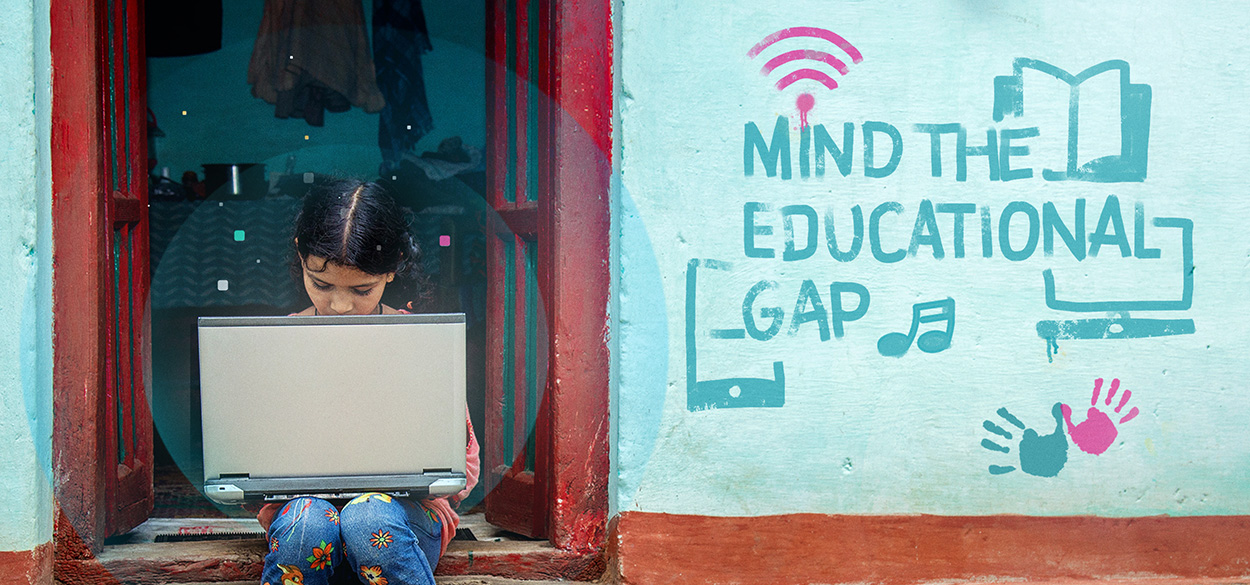
Tech Trends 2021
Digitalisation is shaping every corner of society, and in 2021, it is set to accelerate, enabling new technologies to combat loneliness and permanent remote education, whilst rising security concerns create waves of password panic, predicts Telenor Research in its annual Tech Trends report.
Trend 1: Tech supplements touch to tackle mental health maladies

While the initial Covid-19 shock is slowly fading, the growing number of people who feel isolated and lonely has given rise to a new set of concerns. We are not used to lockdowns or social distancing, and chronic isolation feeds a range of health maladies, such as anxiety and depression. The pandemic has shown us that loneliness is a fundamental public health issue; a health issue that we believe will face an unprecedented technological response in 2021.
 “We predict that eHealth actors will develop and roll out new groundbreaking tools and services to combat mental health issues. For instance, in countries with full 5G implementation, we will likely see the first uses of augmented reality (AR) and virtual reality (VR) technology applied in holographic communication tools within the next year. Having friends and family popping in for a digital visit in full 3D size might drastically alleviate the feeling of loneliness compared to what a traditional video call can offer,” says Bjørn Taale Sandberg, Head of Telenor Research.
“We predict that eHealth actors will develop and roll out new groundbreaking tools and services to combat mental health issues. For instance, in countries with full 5G implementation, we will likely see the first uses of augmented reality (AR) and virtual reality (VR) technology applied in holographic communication tools within the next year. Having friends and family popping in for a digital visit in full 3D size might drastically alleviate the feeling of loneliness compared to what a traditional video call can offer,” says Bjørn Taale Sandberg, Head of Telenor Research.
2021 will also be the year a new generation of chatbots make their entrance. These will be specifically designed to engage and help people who struggle with loneliness. Already, cognitive behavioural therapy-based chatbots exist, but the next generation will bring the robotic companionship to new heights. Drawing on artificial intelligence (AI), these personalized digital helpers can respond to questions, initiate calls, offer entertainment, and conduct mental enrichment activities.
While holographic meetings, robotic companions and therapeutic chatbots will become much more widespread during the coming year, these technologies will not function as replacements for physical human contact, but rather as legitimate solutions for improving the psychological well being of people experiencing prolonged isolation.
“Growing challenges attract innovation, and there is no reason to think loneliness is any different. Richer communication, such as AR and VR, can make a call more lifelike and perhaps help. I think 2021 will cater for some exiting innovations in this area as 5G is rolled out and AI continues to advance,” says Sandberg.
Did our previous predictions come true? Check out our Tech Trends for 2020
Trend 2: A digital spring for green tech

While 2020 was all about fighting the Covid-19 pandemic, 2021 may see a renewed focus on another big challenge, namely climate change.
Ironically, the pandemic has triggered much needed climate-friendly actions. Businesses have increased their utilisation of digital tools, reducing the need for workers to commute and travel.
“We believe governments will use the momentum of 2020 to pave the way for a green recovery in 2021 in the wake of the pandemic’s destructiveness. Digital technologies will play a major role in contributing to effective solutions for other energy-intensive sectors, influencing consumer and producer behaviour. A World Economic Forum study highlights that digital technology can cut global emissions by 15 percent, and we expect to see several emission cuts happen already in 2021,” predicts Sandberg.
Not only will we see climate laws come into action, but AI will also, on a greater scale than ever before, enable smart energy solutions. In cities all over the globe, AI will be implemented to optimise energy consumption in data centres or mobile base stations. It will help make renewable energy, such as wind power, more predictable, and ‘smarten’ up cities by optimising transport and predicting air quality. We will also see the first signs of AI-powered micro IoT devices, called Tiny Machine Learning (TinyML), start operating. TinyML represents the next AI revolution. In 2021, we expect to see a fleet of ultra-small and ultra-low powered drones take to the sky to expand drone monitoring of climate-exposed areas – done on a scale greater than previously thought possible.
Outside the cities, new autonomous modular robots will work in the fields, supporting farmers struggling to find enough agricultural workers. Mechanical weeding with machine vision will streamline the use of pesticides, thus contributing to reducing the environmental impact of agriculture. The new robots will also be considerably smaller and lighter compared to their predecessors, reducing the energy consumption and the soil compaction impact.
“After Covid-19, one of our biggest challenges will again be the climate crisis. Positively, governments, and the EU in particular, are thinking green when allocating funds for recovery. Expect to see a boom in green tech and an increasing focus on energy efficiency,” adds Sandberg.
We’ve also forecasted the post-pandemic era. Do you agree with our researchers?
Trend 3: !]¤Password%@panic!#=? emerges as symptom of cyber security challenges
![!]¤Password%@panic!#=? emerges as symptom of cyber security challenges](/binaries/innovation/research/technology-trends/tech-trends-2021/Password_Panic-landscape-telenor_1250px-1250x585.jpg)
Password123. Nope, no good. Wait, did I not use this for my Netflix account yesterday? Or was it Gmail? No, it was probably for eBay. Either way, I’ve forgotten the password. Again….
Unfortunately, forgetting passwords, even forgetting which digital services we use for which purpose, is a familiar experience for many of us. 2020 was a year of rapid digital adoption, as Covid-19 restrictions limited our physical movability and interactions. With this acceleration into the digital world for many services comes more devices, more accounts, more files, and subsequently, greater security measures.
Therefore, those not equipped with proper password solutions or who do not maintain strict digital hygiene, could in 2021 experience a surge in what can be defined as password panic, the familiar feeling of hopelessness and frustration when your mind draws another password blank. This will be more prevalent due to the ever-increasing number of password-protected accounts we need to manage in addition to the already large number of logins to apps, devices, programs, files, cloud solutions and other digital gadgets we need to remember. The general advice to change your passwords every three months doesn’t exactly relieve any stress. And hold on to your digital horses if you’re thinking about reusing passwords to make it easier on yourself. Again and again, we’re reminded that reusing the same passwords across multiple accounts isn’t a bullet proof security strategy. Even less so going forward as remote working has led to a sharp rise in cyber crime.
Password panic is also a relevant challenge for companies as employees waste precious time struggling to remember their login details. Therefore, we also believe that more companies will take measures to implement user-friendly security solutions such as password managers across sectors or iris and fingerprint scanning solutions. The end goal of the implementation is to ensure efficiency, security, and one less pain point for workers.
“There is no way back – the digital part of our work and personal lives will keep growing, and the number of passwords we have to remember will increase with it. Remembering them while staying cyber safe is not trivial, and 2021 will see an increasing use of tech to manage tech and relieve our stressed-out memories. And remember, writing down all your passwords on a piece of paper and keeping it in a safe place is actually recommended. As we all know, paper is not hackable,” explains Sandberg.
Deepfake and Industrial age 2.0. The 2019 Tech Trends gave reason for both caution and optimism
Trend 4: Society-as-a-service offers much-needed flexibility

In 2020, we saw hordes of employees and students leaving their offices and campuses to work and study from home. Considering how enormous the transition has been and how suddenly it happened, the relative seamlessness of the shift has marked a groundbreaking change in life as we know it, confirming once and for all that connectivity and the right digital tools enable work to be performed anywhere, at any time.
Going into 2021, we foresee that the ability to be flexible generates certain expectations among workers. First, a growing number of workers will demand more flexibility from employers to work from home or other locations outside the office, as flexibility enables people to find a better work-life balance. Secondly, people expect to see amenities that support and facilitate their digital work style being met ‘everywhere’ at any time, marking the dawn of the society-as-a-service age. Soon, speedy Wi-Fi, charging spots, noise cancelling booths, video conferencing zones in public places or at cafés, libraries will change from nice-to-haves to being expected by a growing number of citizens. Don’t be surprised when the coffee shops of today turn into the meeting rooms of tomorrow.
We, therefore, expect many companies and leaders to provide employees with greater flexibility to continue to carry out work outside the office walls in 2021. To ensure the necessary competence for the future way of work, managers will increase the upskilling of employees in cyber security, digital hygiene, and the use of digital tools and technologies. In light of this, companies will rethink, re-evaluate, and readjust their current structures.
“Though the ongoing social isolation for most of us is a case of ‘too-much already’, many of us have appreciated and become both happier and more productive with the shift to work-from-anywhere. Few will want to go back to the everyday commute and often stressful rush to make the school run on time, so companies will adjust to stay attractive for employees by adopting flexible work practices on a permanent basis,” predicts Sandberg.
Interested in learning more about Telenor Research’s work and activities? Please visit our homepage
Trend 5: Mind the educational gap

In recent years, discernible progress in narrowing the educational gap had seemed to bring the UN’s goal of an all-inclusive and equitable quality education for all tantalisingly within reach. Although the Covid-19 lockdowns have led to a wave of innovations and important progress in digital learning, it has done less to reduce the global education gap. Arguably history’s largest educational system disruption occurred when up to 1.6 billion children were affected by school closures at the height of the pandemic. Children from low-income countries were disproportionately affected, having lost far more days of schooling in 2020 compared to those from high-income countries.
The gap may continue to widen in 2021. As teaching pivots from physical classrooms into virtual ones, not all students can easily follow. Today, 2.2 billion of all children and young people aged 25 years and below (accounting for 65 percent of all young people globally) lack internet access at home. Of this number, 768 million live in South Asia, while another 300 million live in the regions of East Asia and Pacific. The difference is especially dramatic when comparing the situations in high and low-income countries. In high-income countries, 87 percent of all children and young people have access to internet at home, starkly contrasted with six percent of those living in low-income countries.
Analytics would suggest that the boost in EdTech adoption, married with fast growing funding, is likely to propel innovation in this space over the coming years. Therefore, in 2021, we can expect to see an escalating number of new and creative modes of digital, thus remote, learning to emerge as a result of the rapidly advancing virtual learning sphere. It’s reasonable to assume that new learning modes will continue even after the pandemic, and drive demand in the consumer market for improved equipment. The combination could accelerate the transition towards a more permanent digital mode of education.
Those properly equipped – such as having network access and necessary devices at their disposal – will be able to take part in this digitization leap and thus benefit. Those unconnected and ill-equipped will however lose ground. Unsurprisingly, too, those lacking equipment already today tend to be children living in poorer countries. Ensuring robust and faster networks, promoting digital literacy and creating healthy partnerships between education and ICT actors can help bridge the gap. However, if not properly addressed, both internationally and within nations, there is a considerable risk we will see an increased educational gap in 2021 and beyond.
“The ‘go home and go online’ mantra of Covid-19 school closings, has led to a widening educational gap. Internet access of sufficient quality, access to a screen and electricity, have become ‘table stakes’ and it will be key for governments and industry to work together to close this gap in 2021,” states Sandberg.